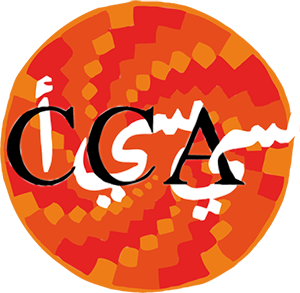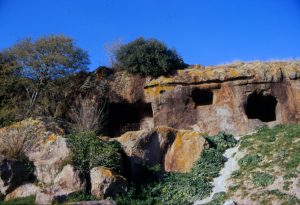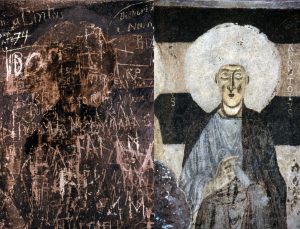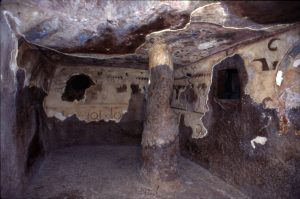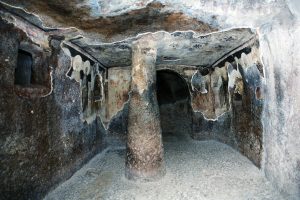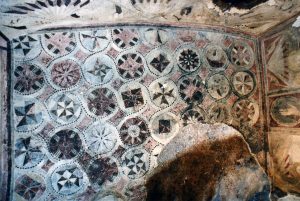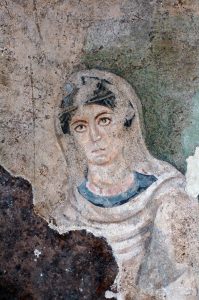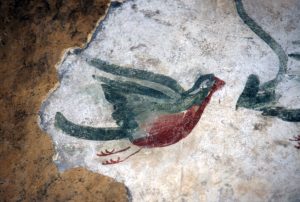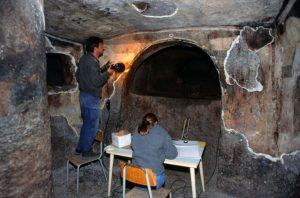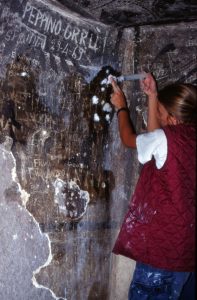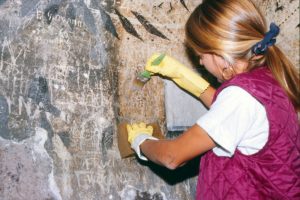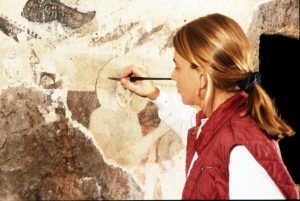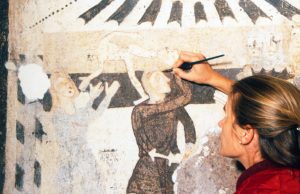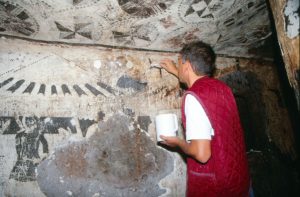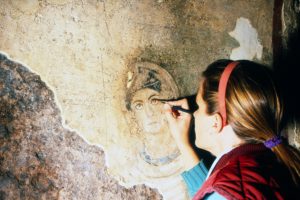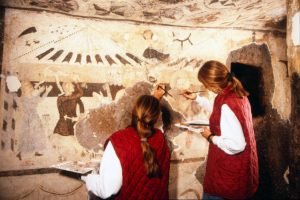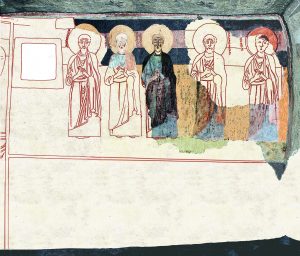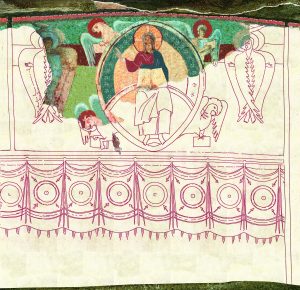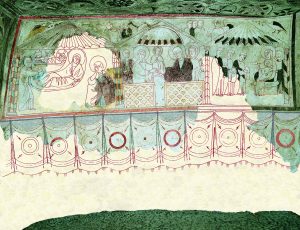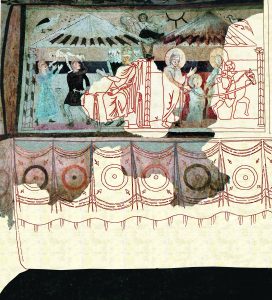Intervention
The treatment aimed to improve the conservation conditions of the entire monument. Preventive operations aimed at removing the principal causes of deterioration, monitoring and maintenance programs were arranged alongside consolidation and surface cleaning operations.
Direct interventions carried out included preliminary cleaning, material consolidation, surface cleaning, filling of lacunae and lacunae integration in the paintings.
Consolidation of detached rock layers and re-adhesion of plaster layers to the support and to other plaster layers were among the first and most urgent treatments to be completed. Due to the severity of detachment in many areas, consolidation with hydraulic lime-based mortar was carried out very gradually, supporting areas that were close to collapse.
In order to increase the visibility of the paintings, which was seriously compromised by a thick layer of soot, two cycles of cleaning were carried out with the aim of selectively removing extraneous substances without affecting the painted layer.
The rock surfaces were cleaned with water containing a surfactant biocide, by brushing the surface and carrying out repeated rinsing.
Cleaning was carried out gradually on the frescoes. Once the first layer of soot had been removed, increased visibility of the paintings allowed for a deeper, localized clean. In order to remove the thicker soot residues and organic deposits a slightly alkaline solvent was brushed onto a double layer of cellulose sheets. The same solution was employed with a cellulose poultice to remove deposits that were incorporated in superficial carbonation.
It is rare to find wall paintings that have been so severely damaged by detachment of the painted surfaces and by vandalism, to such an extent that the images and different historical phases are unrecognizable. The choice was therefore to restore the decorations’ legibility as far as possible, while respecting the monument’s history. Through a patient work of integration, carried out with watercolors, the fragments of surviving color have been linked to one another in order to recompose the whole. Although much of the iconography has been lost forever, it is now possible to distinguish the images, appreciate their stylistic qualities and attribute them to different phases of the monument’s history. The indelible, disfiguring graffiti that, until recently, were the only visible historical signs within the hypogeum, are now hidden to the viewer and may only be revealed through oblique lighting.
